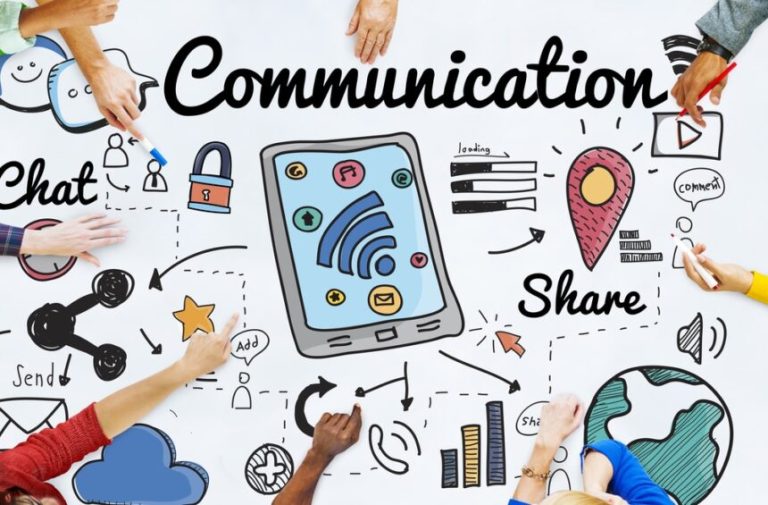How to Use The Zero Risk Bias in Communication?
To use the zero risk bias in communication, present information in a way that emphasizes safety and security. Highlight the lack of potential negative outcomes to persuade the audience.
Effective communication requires understanding and harnessing psychological biases to influence behavior and decision-making. The zero risk bias, a cognitive bias that leads people to prefer options with no risk, can be used to your advantage in communication strategies. By framing your message in a way that focuses on the absence of risk or harm, you can make your communication more compelling and persuasive.
We will explore the concept of the zero risk bias and provide practical tips on how to leverage it in your communication efforts. Whether you are crafting marketing materials, delivering a presentation, or simply engaging in everyday conversations, understanding and utilizing the zero risk bias can enhance the impact of your communication.
Understanding The Zero Risk Bias
Understanding the Zero Risk Bias can enhance communication effectiveness. Utilize this bias by emphasizing the absence of risks in your message, making it more compelling and persuasive.
Definition
The zero risk bias is a cognitive bias that affects communication and decision-making processes. It refers to the tendency of individuals to favor options that carry no risk, even when those options may not be the most optimal or rational choices.
Causes
Several factors contribute to the zero risk bias in communication. Understanding these causes can help individuals navigate and mitigate its effects:
- Loss aversion: Humans have a natural aversion to losses. The fear of making a wrong decision and facing negative consequences drives individuals to opt for choices that seemingly have no risk.
- Uncertainty: When faced with uncertain situations, people tend to seek comfort and security. The zero risk bias allows individuals to feel in control, even if it means sacrificing potential gains.
- Personal experience: Past experiences can heavily influence decision-making. If someone has encountered negative outcomes in the past, they may be more inclined to avoid risks altogether, regardless of the potential benefits.
Recognizing these causes and their impact is crucial to understanding how the zero risk bias can affect communication dynamics.
Benefits Of The Zero Risk Bias
Understanding the benefits of the Zero Risk Bias in communication can help individuals and businesses effectively convey their messages, build trust, and enhance relationships. This bias allows individuals to prioritize confident and certain communication, leading to positive outcomes in various interactions. Let’s explore the specific benefits of the Zero Risk Bias in communication.
Increased Trust
The Zero Risk Bias fosters increased trust as it encourages individuals to communicate with certainty. When people express themselves confidently, others perceive them as knowledgeable and trustworthy. This leads to stronger interpersonal connections and a higher degree of credibility in professional settings.
Enhanced Communication
By harnessing the Zero Risk Bias, individuals can enhance their communication effectiveness. When one communicates with certainty, the message is clear and impactful, leading to better comprehension and reception by the audience. This bias aids in removing ambiguity and doubt, allowing for more effective and impactful exchanges.
Applying The Zero Risk Bias In Communication
When it comes to effective communication, applying the Zero Risk Bias can play a pivotal role in getting your message across in a compelling and influential manner. By understanding and leveraging this bias, you can significantly enhance the impact of your communication strategies. Let’s dive into the key aspects of employing the Zero Risk Bias in your communication to effectively frame messages and utilize positive language.
Framing Messages
Framing messages with the Zero Risk Bias involves presenting information in a way that minimizes potential risks while highlighting the benefits or opportunities. Whether you are communicating in a professional setting or conveying a personal message, framing your message with the Zero Risk Bias can help you resonate with your audience and garner a favorable response. By emphasizing the positive outcomes and downplaying potential drawbacks, you can influence perceptions and decision-making processes.
Using Positive Language
Employing positive language is a key strategy aligned with the Zero Risk Bias. By using affirming and optimistic language, you can instill confidence and inspire action in your audience. Whether you are crafting marketing materials, delivering a presentation, or engaging in interpersonal communication, integrating positive language can enhance the reception of your message and cultivate a sense of assurance and trust.
Challenges And Limitations
Communicating with the zero risk bias presents challenges and limitations. It requires careful selection of words and phrases to avoid common pitfalls and ensure clear, effective communication. Proper utilization of this bias can lead to improved understanding and engagement with the audience.
Balancing Honesty And Zero Risk Bias
When utilizing the zero risk bias in communication, one crucial challenge to consider is finding the balance between honesty and the avoidance of risk. Striking this delicate equilibrium is necessary to maintain trust with your audience while also minimizing potential negative consequences. It is essential to be truthful without causing unnecessary harm or alarm.
Balancing honesty and the zero risk bias can be tricky, as being completely transparent may lead to unintended repercussions. In certain situations, it may be prudent to withhold certain information or present it in a carefully selected manner. This approach ensures that although risks are minimized, the communication remains authentic and credible.
It is vital to remember that honesty should be the guiding principle, and any attempt to conceal or manipulate information can quickly erode trust. Whether it is in personal relationships or business interactions, finding the middle ground between open communication and mitigating unnecessary risk is key to effective communication.
Overuse And Misinterpretation
While the zero risk bias can be an effective communication strategy, overusing or misinterpreting its principles can have negative consequences. It is important to exercise caution and consider the context in which it is being applied.
Overreliance on the zero risk bias may result in an overly cautious approach that limits innovation, growth, or necessary risk-taking. Sometimes, embracing calculated risks is necessary for progress. By constantly seeking zero risk, we potentially overlook valuable opportunities or advancements that require some level of uncertainty.
Misinterpretation of the zero risk bias can also be problematic. It is crucial to understand that this bias does not advocate for ignoring all risks or hiding critical information. Instead, it encourages an evaluation and careful handling of risks to minimize their potential negative effects while maintaining an honest and transparent communication style.
In essence, the zero risk bias should not be seen as a rigid rule or an excuse for evasiveness. It should be approached thoughtfully and used judiciously to ensure that communication remains effective, honest, and builds trust with the intended audience.
Frequently Asked Questions Of How To Use The Zero Risk Bias In Communication?
What Is An Example Of Zero Risk Bias?
Zero risk bias is when individuals prefer options with no risk, even when the potential benefits are low. For example, choosing a low-interest savings account instead of a higher-risk investment.
How Zero Risk Bias Can Be Exploited?
The zero risk bias can be exploited by presenting options as “safe” when they may not be. Promote false security to manipulate decision-making.
What Is The Zero Risk Approach?
The zero risk approach aims to eliminate all potential risks and uncertainties in a given situation, ensuring complete safety and security. This strategy prioritizes preventive measures and thorough risk assessment to minimize any chance of negative outcomes.
Conclusion
Embracing the zero risk bias in communication can have a profound impact on our relationships and decision-making. By recognizing our natural inclination to avoid uncertainty, we can leverage this bias to enhance our persuasive abilities and connect more deeply with others.
By focusing on tangible benefits and minimizing potential losses, we can create a compelling narrative that resonates with our audience. So, next time you find yourself in a situation where effective communication is paramount, remember to harness the power of the zero risk bias to achieve your desired outcomes.


